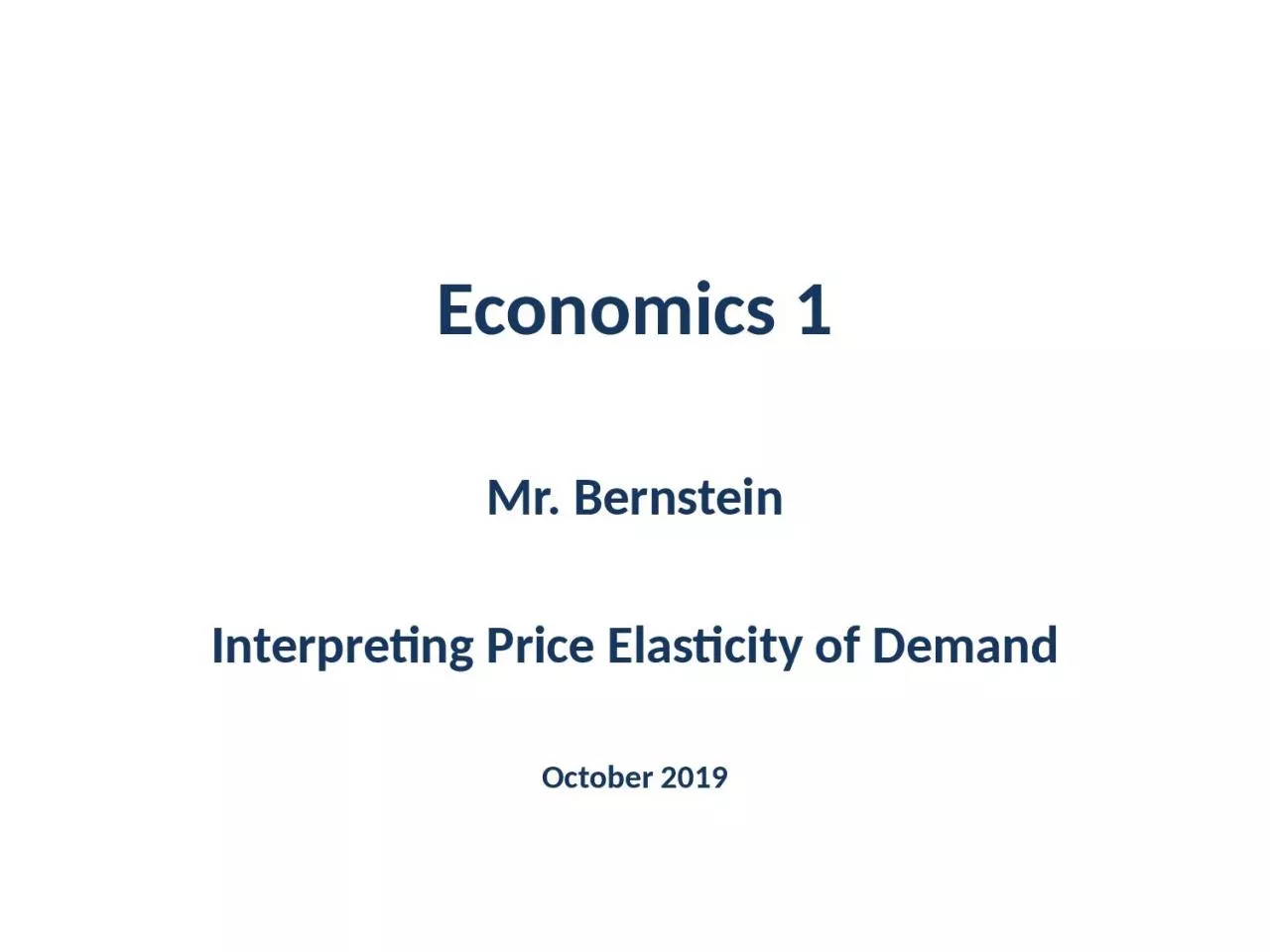

Interpreting Price Elasticity of Demand October 2019 Economics 1 Mr Bernstein What Does the Value of Elasticity Tell Us Example E d ΔQ d ΔP 10 P rises 1 Algebra ID: 928413
Download Presentation The PPT/PDF document "Economics 1 Mr. Bernstein" is the property of its rightful owner. Permission is granted to download and print the materials on this web site for personal, non-commercial use only, and to display it on your personal computer provided you do not modify the materials and that you retain all copyright notices contained in the materials. By downloading content from our website, you accept the terms of this agreement.
Slide1
Economics 1
Mr. Bernstein
Interpreting
Price Elasticity of Demand
October
2019
Slide2Economics 1
Mr. Bernstein
What Does the Value of Elasticity Tell Us?
Example: Ed = %ΔQd/%ΔP = 10; P rises 1%Algebra: %rQd/1% = 10, so %rQd = 10% fall in QdFor a business, this is a dramatic fall in sales due to a small price increaseElasticity describes the steepness of the demand curveElasticity of zero = “perfectly inelastic” – changes in prices have no impact on quantity demanded (vertical)“Perfectly elastic” – changes in prices have infinitely large impact on quantity demanded (horizontal curve)
2
Slide3Economics 1
Mr. Bernstein
Examples of Perfectly Inelastic and Elastic Curves
xxxx3
Slide4Economics 1
Mr. Bernstein
What Does the Value of Elasticity Tell Us?
In general terms:Inelastic means a steep or steeper curveElastic means a flat or flatter curve4
Slide5Economics 1
Mr. Bernstein
Elasticity and Total Revenue
TR = P x QPrice effect: Raise P, R tends to riseQuantity effect: Raise P, Qd falls, so R tends to fall5
Slide6Economics 1
Mr. Bernstein
Elasticity along the Demand Curve
TR begins to fall as prices rise and Elasticity grows6
Slide7Economics 1
Mr. Bernstein
Determinants of Elasticity
# of SubstitutesMore substitutes, more elasticityLuxury or NecessityMore necessary, less elasticity Example: Insulin vs. BicyclesShare of Income SpentLarger percent of budget, more elasticityAKA Expensive vs. InexpensiveTimeMore time involved, more elasticity7
Slide8Economics 1
Mr. Bernstein
Determinants of Elasticity, cont.
Total Revenue (TR) TestIf TR rises as P rises, demand is inelasticIf TR falls as P falls, demand is inelasticIf TR falls as P rises, demand is elasticIf TR rises as P falls, demand is elasticElasticity Coefficient TestIf Elasticity >1, it is elasticIf Elasticity <1, it is inelastic8